Address
304 North Cardinal St.
Dorchester Center, MA 02124
Work Hours
Monday to Friday: 7AM - 7PM
Weekend: 10AM - 5PM
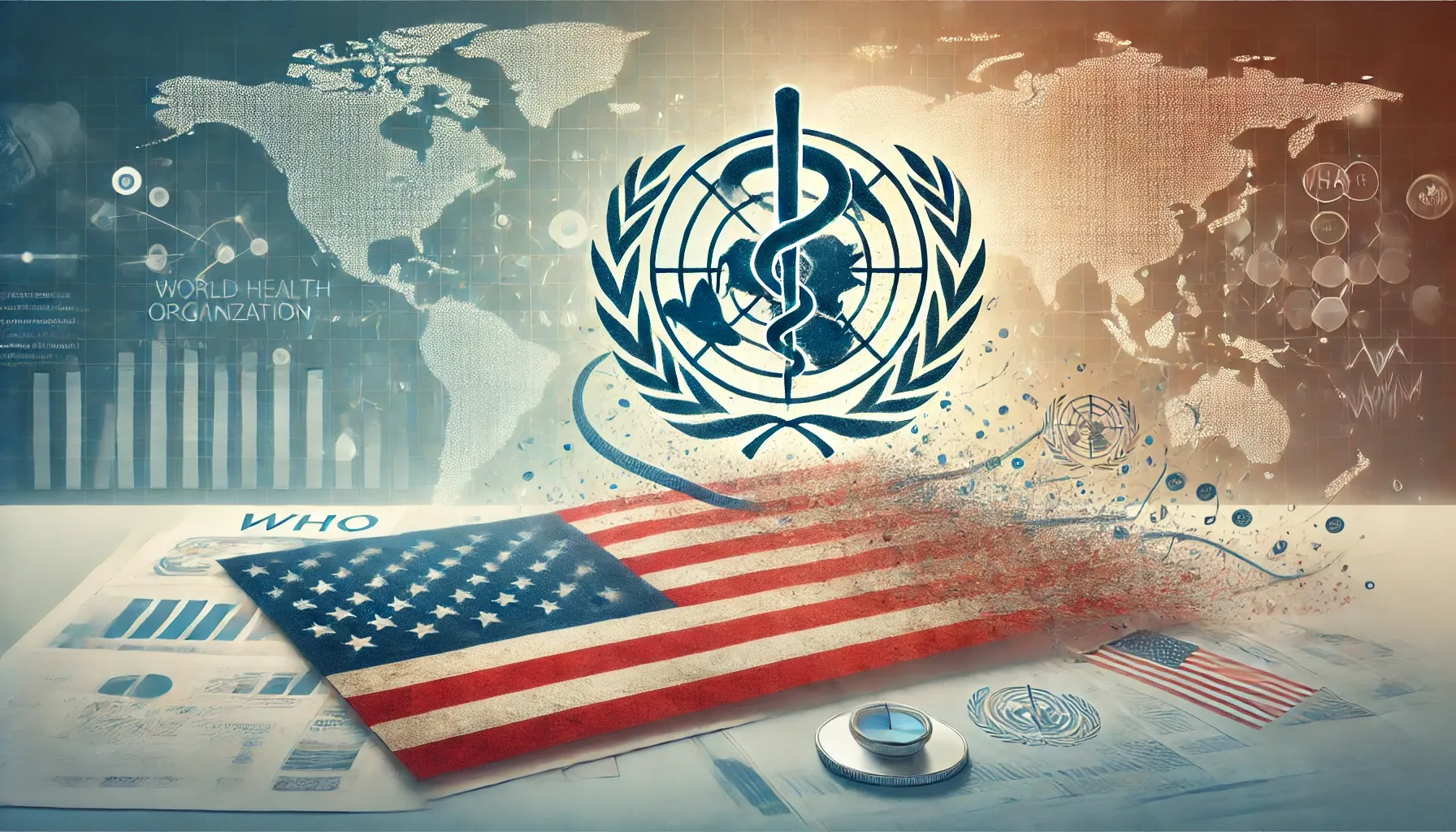
The United States’ relationship with the World Health Organization took a dramatic turn on January 20, 2025, as President Trump signed an executive order withdrawing American membership from the global health body. This decisive action, coming exactly four years after the previous administration’s decision to rejoin the organization, marks a seismic shift in U.S. global health policy and fundamentally reshapes the landscape of international health cooperation.
The executive order, issued during the first hours of Trump’s second term, systematically dismantles the architecture of U.S. involvement with the WHO. Beyond merely withdrawing membership, the order initiates an immediate pause on all U.S. government funding to the organization, recalls American personnel and contractors, and terminates U.S. participation in critical WHO initiatives, including ongoing pandemic agreement negotiations. The administration’s justification centers on longstanding criticisms of the WHO’s handling of the COVID-19 pandemic, its alleged failure to implement necessary reforms, and what it characterizes as disproportionate financial obligations placed on the United States compared to other member states.
The timing of this withdrawal carries particular significance. It comes amid ongoing global efforts to strengthen international pandemic preparedness and response capabilities, with numerous countries working to establish more robust frameworks for managing future health crises. The United States’ departure from these negotiations creates immediate uncertainty about the future of these initiatives and raises questions about how global health security can be maintained in an increasingly fragmented international landscape.
At the heart of the administration’s criticism lies a stark comparison with China’s financial contributions to the WHO. The executive order explicitly highlights that China, despite having a population more than three times that of the United States, contributes nearly 90 percent less to the organization. This disparity has long been a point of contention in discussions about WHO reform, but rather than continuing to push for changes from within, the administration has opted for complete withdrawal.
The immediate implications of this decision ripple far beyond simple membership status. As the WHO’s historically largest financial contributor, the United States’ withdrawal creates an immediate and substantial funding gap in global health initiatives. This void affects everything from disease surveillance networks to emergency response capabilities, from vaccine distribution programs to health system strengthening initiatives in developing nations. The executive order’s provision to identify “credible and transparent U.S. and international partners” suggests an intention to create parallel structures for international health cooperation, but establishing alternatives to the WHO’s existing global infrastructure presents formidable challenges.
In the domestic sphere, the order mandates significant restructuring of U.S. health security infrastructure. The National Security Council is tasked with establishing new directorates and coordinating mechanisms to maintain global health security functions previously supported through WHO collaboration. This reorganization represents both a challenge and an opportunity to reimagine U.S. public health response capabilities. Furthermore, the mandate to review and replace the 2024 U.S. Global Health Security Strategy signals a comprehensive reimagining of the American approach to global health challenges.
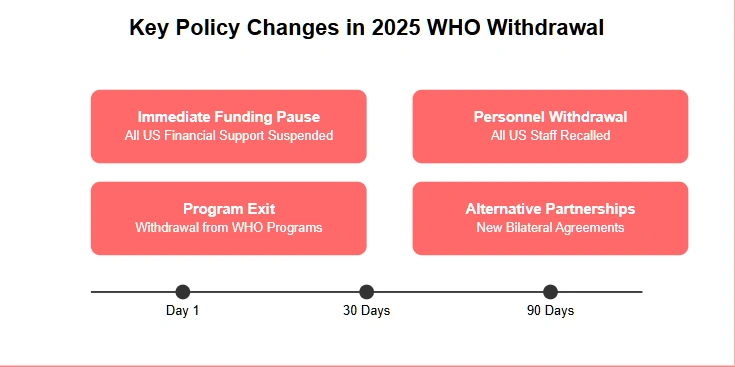
The reverberations of America’s withdrawal from the WHO extend deep into the realm of international relations. Traditional U.S. allies, particularly in Europe, now face difficult decisions about how to maintain effective health cooperation with the United States while preserving their commitments to the WHO framework. The power vacuum created by U.S. withdrawal provides China with an unprecedented opportunity to expand its influence in global health governance, potentially accelerating the ongoing realignment of international power dynamics in this crucial sector.
The complexity of this diplomatic challenge becomes particularly apparent in the context of emerging health threats. Without the WHO’s established channels for information sharing and coordination, countries must rapidly develop new bilateral and multilateral mechanisms to ensure continued cooperation. The executive order’s emphasis on identifying alternative international partners suggests an awareness of this need, but building such relationships requires time, resources, and careful diplomatic navigation.
The reorganization of global health infrastructure carries significant economic implications, particularly in sectors related to medical supplies, pharmaceuticals, and biotechnology. The established WHO framework has long facilitated international cooperation in these areas, from coordinating supply chains during health emergencies to standardizing medical practices and products across borders. As the United States steps away from this framework, new questions arise about how these crucial economic relationships will be maintained and adapted.
Medical and pharmaceutical companies, especially those with significant international operations, must now navigate a more complex regulatory landscape. The absence of WHO-facilitated standardization could lead to increased costs and complications in international medical trade. Additionally, the development and distribution of new medical technologies and treatments may face new hurdles without the established WHO protocols for international cooperation and data sharing.
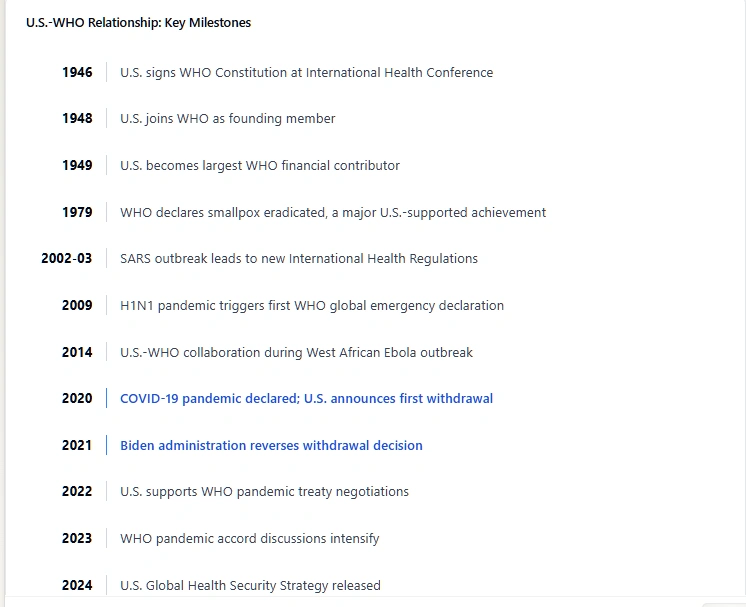
Perhaps the most immediate practical concern arising from the U.S. withdrawal is the maintenance of effective global disease surveillance. The WHO has historically served as the central hub for collecting, analyzing, and disseminating information about emerging health threats. The executive order’s mandate to establish alternative mechanisms for this crucial function presents significant technical and logistical challenges.
The United States must now develop new systems for gathering and sharing health intelligence with international partners. This includes not only tracking emerging diseases but also monitoring antimicrobial resistance, environmental health threats, and other critical public health concerns. The success of these alternative systems will depend heavily on the willingness of other nations to participate and share sensitive health data outside the established WHO framework.
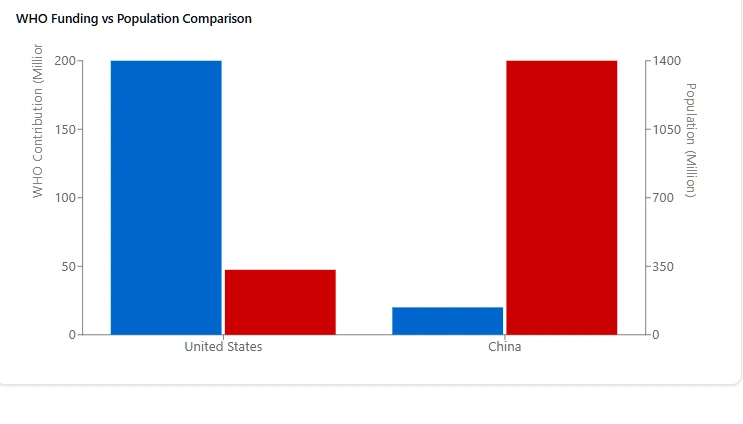
Within U.S. borders, the withdrawal necessitates a substantial reorganization of public health infrastructure. The National Security Council’s new health security directorates must develop robust mechanisms for international cooperation while maintaining domestic preparedness. This includes establishing new protocols for emergency response, developing independent channels for international health intelligence, and creating new frameworks for coordinating with state and local health authorities.
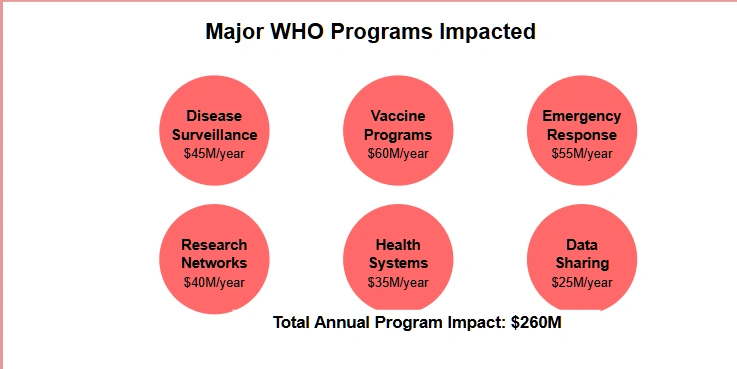
The withdrawal from WHO significantly impacts the landscape of global vaccine development and distribution networks. The WHO has historically played a crucial role in coordinating international vaccine research efforts, standardizing clinical trial protocols, and ensuring equitable vaccine distribution during health emergencies. The United States must now forge new pathways for participating in these essential activities.
The executive order’s directive to establish alternative international partnerships suggests a potential shift toward more bilateral vaccine development agreements. While this approach might offer greater control over research priorities and resource allocation, it also risks fragmenting the global vaccine development ecosystem. The success of future pandemic response efforts will depend heavily on how effectively these new arrangements can replicate or improve upon the WHO’s existing coordination mechanisms.
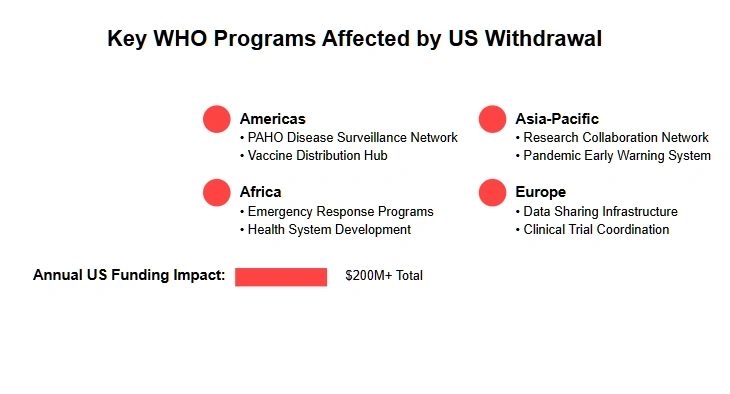
As the United States steps back from WHO participation, regional health security networks may take on greater importance. The Americas region, in particular, faces both opportunities and challenges in adapting to this new reality. The existing infrastructure of the Pan American Health Organization (PAHO) could provide a foundation for enhanced regional cooperation, though the U.S. withdrawal from WHO may complicate these relationships given PAHO’s status as a WHO regional office.
The potential emergence of new regional health alliances could reshape patterns of international health cooperation. Countries may increasingly look to strengthen ties with geographic neighbors and strategic partners, potentially leading to a more localized approach to health security. This shift could result in more agile response capabilities for regional health threats but might also complicate coordination during global health emergencies.
The scientific community faces particular challenges in adapting to the post-WHO landscape. The organization has long served as a central clearinghouse for global health data and research coordination. Its standardized protocols and reporting systems have facilitated international scientific collaboration and enabled rapid response to emerging health threats. The executive order’s provisions for alternative partnerships must address this critical need for continued scientific cooperation.
American researchers and institutions now face the task of maintaining effective international collaboration through new channels. While digital technologies and existing scientific networks may facilitate continued cooperation, the absence of WHO frameworks for data sharing and research coordination could introduce new complications. The scientific community must develop alternative mechanisms for sharing critical health data while ensuring appropriate security and privacy protections.
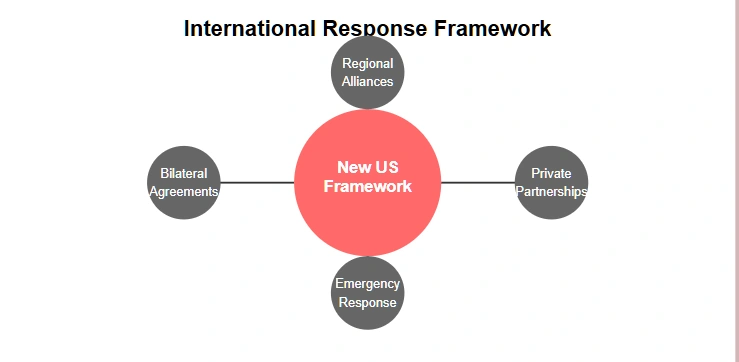
The U.S. withdrawal fundamentally alters the landscape of global health governance. The WHO has served as the primary forum for international health policy coordination since its founding in 1948, and its authority in declaring public health emergencies of international concern has been central to global crisis response. The executive order’s rejection of this framework raises important questions about how international health emergencies will be managed in the future.
The creation of alternative international partnerships, as mandated by the executive order, must address not only practical coordination needs but also the complex political and legal frameworks necessary for effective global health governance. This includes establishing new mechanisms for declaring and responding to international health emergencies, coordinating cross-border health measures, and maintaining consistent global health standards.
The ripple effects of U.S. withdrawal from WHO extend deeply into domestic healthcare systems. American healthcare providers have long relied on WHO guidelines and protocols for everything from disease classification to treatment recommendations. The transition away from these established frameworks requires careful consideration of how to maintain consistency in healthcare delivery while potentially developing new standards and protocols.
Healthcare institutions must now navigate a more complex international landscape when coordinating care across borders or participating in international medical research. The executive order’s mandate to establish new partnerships may eventually provide alternative frameworks, but the immediate period of transition presents significant challenges. Medical facilities, particularly those serving international patients or participating in global health initiatives, must develop new protocols for international coordination and data sharing.
The technological infrastructure supporting global health cooperation faces particular challenges in the wake of U.S. withdrawal. The WHO has traditionally provided central platforms for health data sharing, disease surveillance, and emergency communications. The development of alternative systems, as implied by the executive order, requires not only technical solutions but also new agreements on data standards, sharing protocols, and security measures.
The opportunity exists to develop more modern, efficient systems for international health data sharing and analysis. However, the fragmentation of global health information infrastructure could complicate efforts to track and respond to emerging health threats. The success of new technological solutions will depend heavily on international adoption and interoperability with existing systems.
The execution of this withdrawal order demands strategic adaptation across multiple sectors. For U.S. public health institutions, success requires developing robust domestic capabilities while maintaining effective international cooperation through new channels. This includes strengthening state and local health departments, enhancing domestic disease surveillance capabilities, and establishing direct relationships with international counterparts.
Private sector healthcare organizations must also adapt their international engagement strategies. This includes reviewing and potentially revising international research partnerships, updating protocols for international patient care, and developing new mechanisms for participating in global health initiatives outside the WHO framework.
For the international community, engaging with a WHO-independent United States requires careful balancing of existing multilateral commitments with the need for continued cooperation with American institutions. The development of new cooperation frameworks must address both practical coordination needs and political sensitivities.
The long-term implications of U.S. withdrawal from WHO will largely depend on the success of alternative international partnerships and coordination mechanisms. The executive order’s emphasis on identifying “credible and transparent” partners suggests a more selective approach to international health cooperation, potentially leading to a more fragmented but potentially more efficient global health security landscape.
The success of this dramatic policy shift will ultimately be measured by its impact on global health outcomes and the international community’s ability to respond effectively to future health crises. While the immediate challenges are significant, the opportunity exists to develop more effective mechanisms for international health cooperation that address the criticisms leveled at the WHO while maintaining crucial coordination capabilities.
The United States’ withdrawal from the World Health Organization represents more than a simple policy change; it marks a fundamental shift in the architecture of global health governance. The executive order’s provisions for alternative international partnerships acknowledge the continued need for global health cooperation while rejecting the existing multilateral framework. As this transition unfolds, the success of new approaches to international health coordination will depend on the careful balance of national interests with the imperative of effective global health security.
The coming years will prove crucial in determining whether this bold policy shift leads to more effective global health governance or creates dangerous gaps in international health security infrastructure. The challenge lies not only in maintaining existing capabilities but in building new, more effective mechanisms for international health cooperation that can meet the complex challenges of an increasingly interconnected world. As the United States charts this new course in global health policy, the impacts of its decisions will resonate far beyond its borders, shaping the future of international health cooperation for decades to come.
[…] 2020 – World Health Organization: Amid the COVID-19 pandemic, Trump announced the U.S. would quit the WHO, accusing the U.N. health agency of being a Chinese puppe… (Legally, this withdrawal would take effect in mid-2021, but President Biden reversed it on day […]
[…] pretenses.– China was engaged through incoherent economic warfare, not diplomatic leverage.– The WHO was abandoned during a global pandemic and subsequently withdrawn from – throwing the …– U.S. border policy became both literal and symbolic authoritarian […]